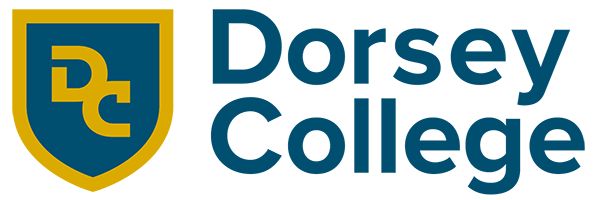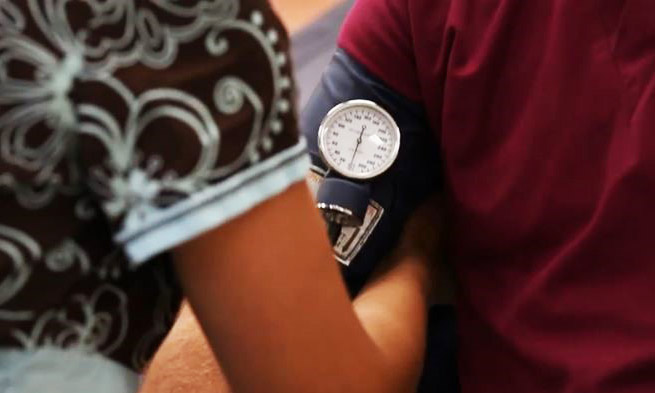Since February is Heart Health Month, it’s only fitting that we take time to discuss the basics about blood pressure, which is paramount when it comes to maintaining your heart health. In our blog today, we break down some of the basics about blood pressure to give you a better idea of how you can be more informed about YOUR blood pressure and your heart health.
What is blood pressure?
Blood pressure is defined as the pressure of the blood against the inner walls of the blood vessels, varying in different parts of the body during different phases of contraction of the heart and under different conditions of health, exertion, etc. a
Why is managing a healthy blood pressure important?
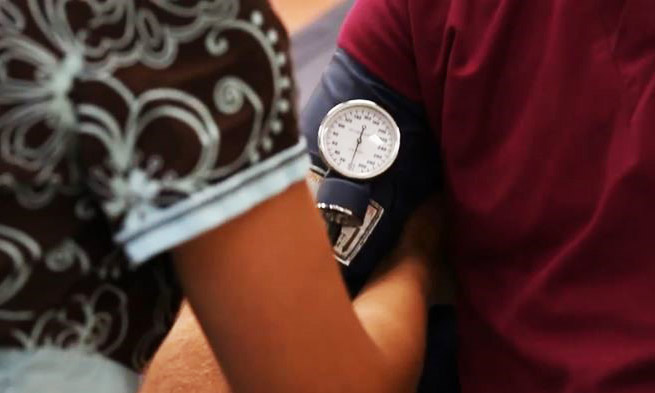
Managing a healthy blood pressure is important because having high blood pressure can present serious consequences to your heart health. According to the American Heart Association, roughly 80 million U.S. adults have been diagnosed with high blood pressure. b Left untreated, high blood pressure can damage and scar your arteries. High blood pressure can also cause several other problems, such as vascular weakness, increased risk of blood clots, increased plaque build-up, tissue and organ damage from arteries that have become narrowed and/or blocked, and increased workload on the circulatory system. c
What is a “normal” blood pressure?
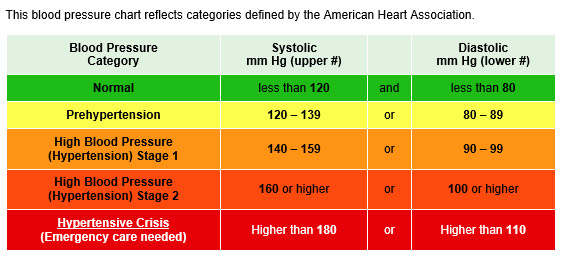
The American Heart Association recommends that a normal or a healthy blood pressure be less than 120 for Systolic (top number) and less than 80 for Diastolic (bottom number). The chart below (from the AHA) can be helpful in determining which category your blood pressure currently resides. d
What is the difference between the top and the bottom number in blood pressure?
Blood pressure is recorded as two numbers; a top number (Systolic) and a bottom number (Diastolic). Systolic measures the pressure in the arteries when the heart beats (when the heart muscle is contracting). Systolic is also the larger number between the two. Diastolic measures the pressure in one’s arteries between heartbeats (when the heart is resting between beats and refilling with blood). d
About the Medical Training Programs at Dorsey Schools
The Medical Training programs offered at Dorsey Schools are designed to 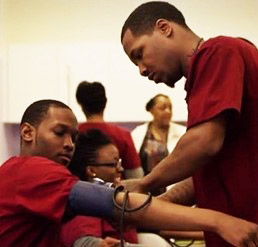 help prepare students for exciting new careers in the healthcare field! Students can benefit from hands-on training that takes place in a traditional classroom environment as well as in the labs on campus. Students in select programs may also benefit from an externship, which takes place during the final module of training, where they can apply the skills and knowledge learned throughout their program in an actual occupational setting.
help prepare students for exciting new careers in the healthcare field! Students can benefit from hands-on training that takes place in a traditional classroom environment as well as in the labs on campus. Students in select programs may also benefit from an externship, which takes place during the final module of training, where they can apply the skills and knowledge learned throughout their program in an actual occupational setting.
Dorsey Schools offers several career training programs for those looking to enter the healthcare field. These programs include:
- Medical Assistant
- Medical Administration and Billing
- Patient Care Technician
- Dialysis Patient Care Technician
If you’d like to learn more about the Medical Training programs offered at Dorsey Schools, you can give us a call at 888-422-1188 or request info online.
For more information about our graduation rates, the median debt of students who have completed the program, and other important information, please visit www.dorsey.edu/disclosures.
Sources:
- a http://dictionary.reference.com/browse/blood-pressure
- b http://www.heart.org/HEARTORG/Conditions/HighBloodPressure/AboutHighBloodPressure/About-High-Blood-Pressure_UCM_002050_Article.jsp#.VrNydHnltD_
- c http://www.heart.org/HEARTORG/Conditions/HighBloodPressure/AboutHighBloodPressure/What-is-High-Blood-Pressure_UCM_301759_Article.jsp#.VrNwZnnltD8
